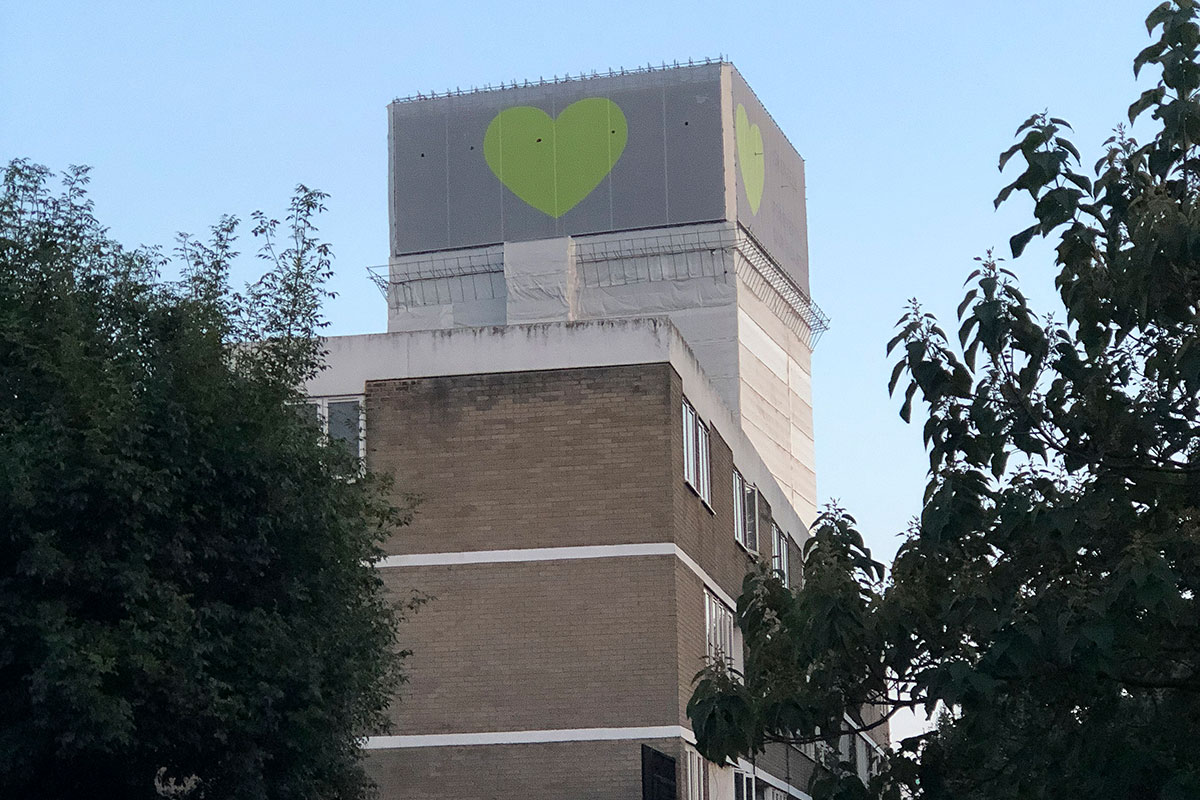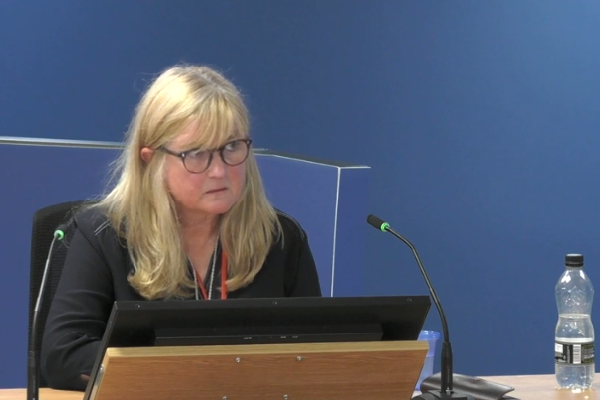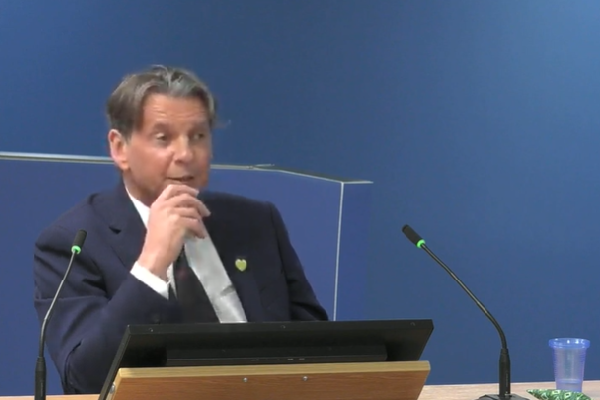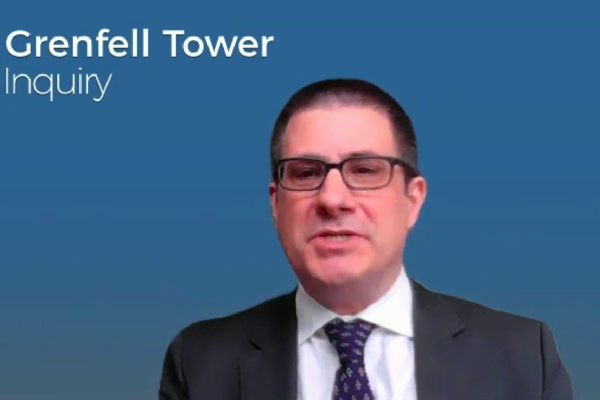Disabled Grenfell Tower residents regularly trapped by broken lifts with no plans made for escape in fire
Disabled residents of Grenfell Tower were regularly trapped in the building due to broken lifts and offered no plan for their escape in an emergency, the inquiry into the fire heard today.
Today the inquiry heard live evidence from four former residents of the tower as well as extracts from the witness statements of nine further residents or bereaved relatives of deceased residents.
Several of these witnesses had mobility issues that made using the stairs difficult, and they described how Kensington and Chelsea Tenant Management Organisation (KCTMO) failed to plan for their escape in a fire.
Mariko Toyoshima-Lewis, who lived in one of the flats added during the refurbishment on the third floor in what was previously commercial space, said she was entirely reliant on the lifts to enter and exit the building.
She said there were approximately 10 instances over a 10-month period when both lifts were broken, meaning she was unable to leave the tower to take her two sons, aged five and seven, to school.
“I asked the estate inspector of the tower how I would escape in the event of a fire,” she said in her statement. “He came and talked to me for three hours explaining about how the building was built and designed to contain a fire. He told me there was very thick concrete around the flat… [and] because of this protection I did not have to leave the building.”
On the night of the fire, she was carried out of the tower by firefighters.
The inquiry also heard from her neighbour on the third floor, Mahboubeh Jamalvatan, who was also unable to use the stairs and escaped on the night by sitting down and “bumping” her way down the steps.
Maher Khoudair, who lived on the ninth floor and had polio in both legs, added: “When I moved to Grenfell Tower, nobody gave me any fire safety advice or explained to me what to do in case of fire.
“The council did not prepare any personal emergency evacuation plan for me as a disabled person on crutches to explain to me what I should do in case of emergency.”
Sawson Choucair – who lost his mother, sister, brother-in-law and three nieces in the fire – said that his mother, who lived on the 22nd floor, had difficulty walking due to her back and used a walking stick. “If both of the lifts were not working, she would not be able leave the flat,” he said.
Ahmed Elgwahry, who lost his sister and mother in the blaze, said that his mother had health issues which meant she could not climb many stairs and her physical disability was recorded by KCTMO.
“She lived on the 22nd floor and liked doing so, but relied on the lift. If this was out of order she was trapped in the flat,” he said. “At no point did anyone talk to my mother about what she should do or where she should go in the event of a fire. No plans appear to have been made.”
The Royal Borough of Kensington and Chelsea (RBKC) accepted in its opening statement that it did not plan for the evacuation of residents with disabilities, with lawyers for the families describing the fire as a “landmark act of discrimination against disabled and vulnerable people”.
Residents with disabilities died at a far higher rate than other groups in the fire, with 41% of those present on the night known to have disabilities dying.
Legislation requires building owners to plan for the evacuation of all residents, including those with disabilities.
However, in the years before the Grenfell Tower fire many social landlords followed guidance published by the Local Government Association (LGA) and endorsed by government that suggested such plans were unnecessary and people with disabilities should instead rely on ‘stay put’.
This guidance has recently been withdrawn from the LGA website.
While the first phase of the inquiry recommended making evacuation plans for disabled residents mandatory, the government sought to water this down following industry lobbying – a move that resulted in legal action from a family who lost their mother at Grenfell Tower.
The Home Office is now set to reopen its consultation on evacuation plans.
The inquiry also today heard from several witnesses who said their fire door self-closers were broken and in some instances disconnected by KCTMO staff.
The failure of self-closers on the night is believed to have been a major contributing factor in the spread of smoke through lobbies and the stairwell.
Betty Kasote, who lived on the seventh floor, said the door jammed shortly after it was replaced and would not close.
“The person that came adjusted the mechanism on the back of the door which had previously made it close automatically, so that it no longer worked and my door remained open, not closing automatically,” she said in her statement.
“I remember asking whether this was a problem. The person that did the work told me it was not an issue and that it was ‘causing complications’.”
Asked about this today, she said that no one from KCTMO had explained the importance of a self-closer to her and that no one had inspected the door following the work to ensure it was safe.
Youseff Khaloud, who lived on the 11th floor, also said that a KCTMO staff member had disconnected his self-closer.
Corrine Jones, who lived on the 17th floor, said that her door never self-closed and that she raised this with two firefighters who visited the building just four days before the fire. She said that the firefighter “reassured me that they did not need to automatically close”.
Regulations require fire doors to be self-closing, but the inquiry has previously heard that on the night of the fire many inside Grenfell Tower were broken or removed. A caretaker has testified to disconnecting some of the self-closers due to a common fault that caused them to jam.
Many of the residents who appeared today also gave evidence about difficulties raising general complaints with KCTMO.
Ms Kasote described an instance where three serious leaks in 2016 flooded her property, but found KCTMO staff “abrupt and rude” when she phoned the complaints line to raise the issue.
“It was like she was angry with me that I was making a complaint,” she said. “I felt like they thought I was a ‘troublemaker’ because I had been making complaints about these leaks but I was incredibly stressed, had to take time off work, and [KCTMO] did not seem to be doing anything else about it.”
She said that a workman who eventually attended broke her toilet and accidentally removed an expensive rug she had just purchased when he had finished his work. She was unable to get it back.
She said raising complaints became more difficult after KCTMO removed its office at the base of the tower. “I do think that after they got rid of the office in the bottom of the tower, things became worse as we always had to speak to a centralised office away from the tower rather than sometimes being able to speak to someone we knew,” she said.
The inquiry continues with Ed Daffarn, who helped establish a residents group and contributed to a blog about the issues with the tower, scheduled to give evidence all day tomorrow.
Sign up for our weekly Grenfell Inquiry newsletter
Each week we send out a newsletter rounding up the key news from the Grenfell Inquiry, along with the headlines from the week
Already have an account? Click here to manage your newsletters














